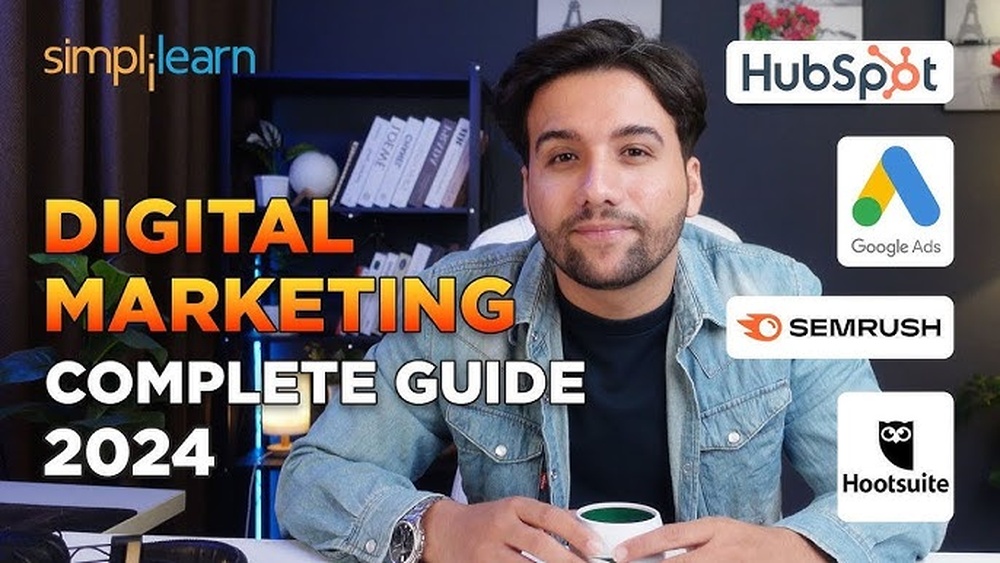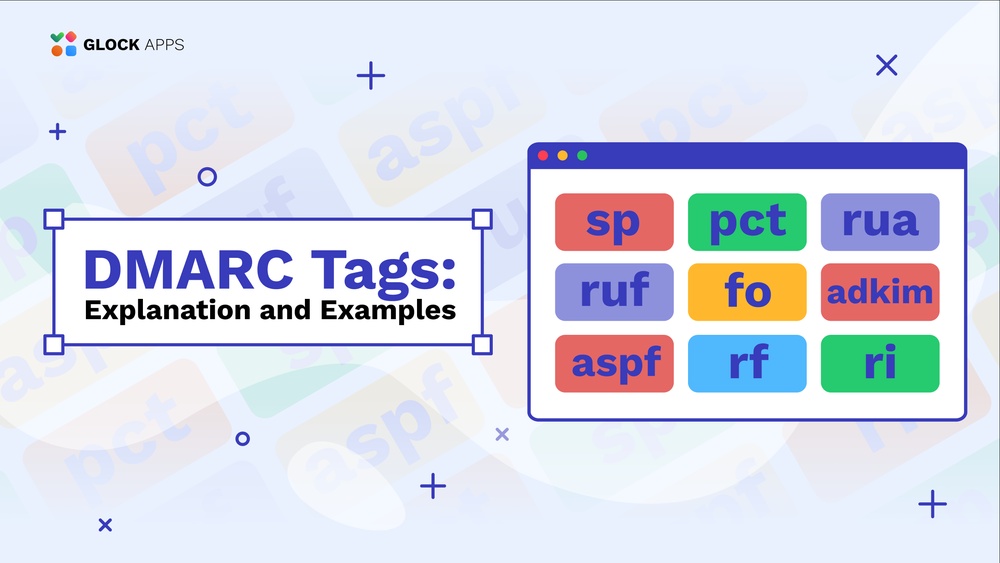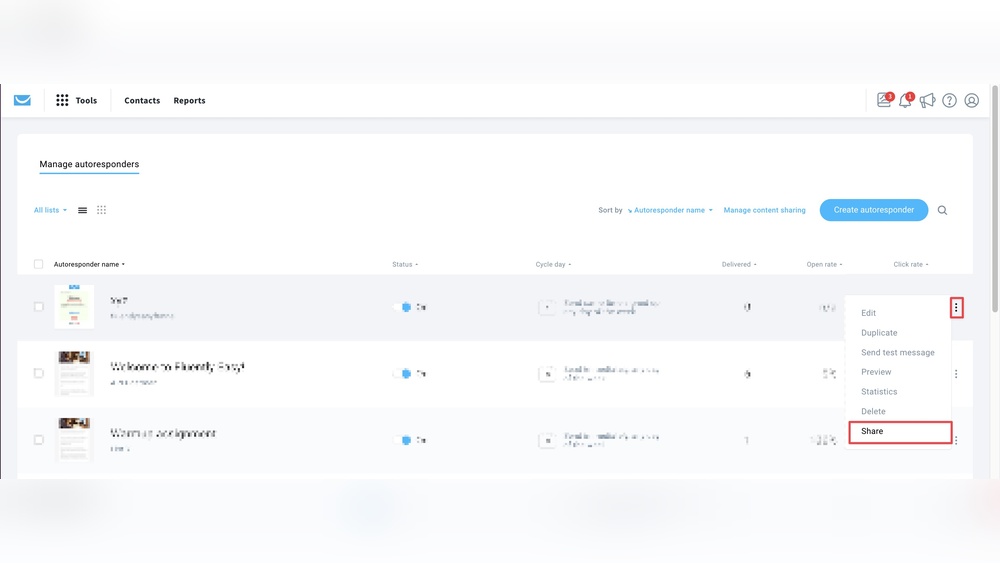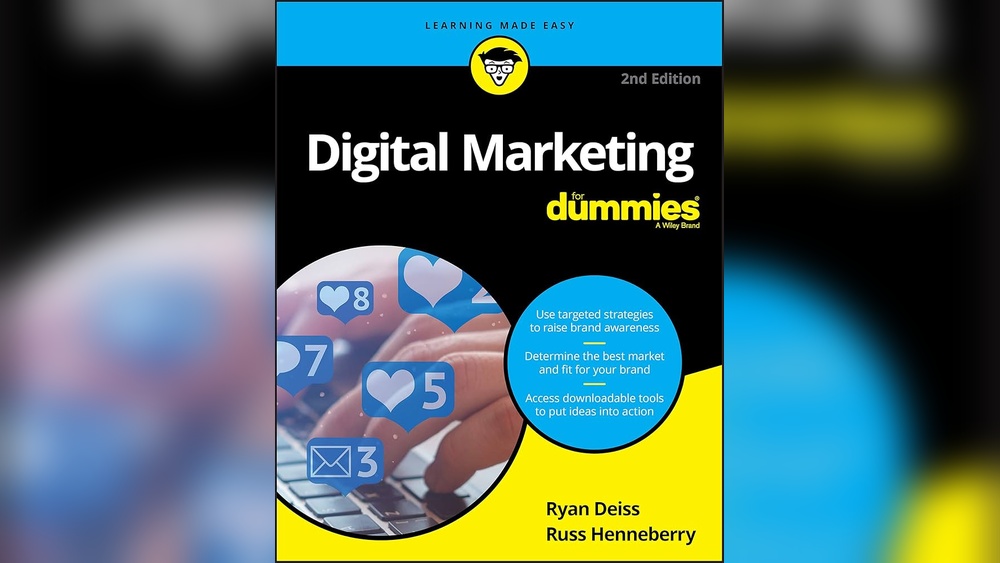Are you ready to unlock the power of digital marketing and take your business or career to the next level? This Digital Marketing Tutorial Guide is designed just for you.
Whether you’re starting from scratch or looking to sharpen your skills, you’ll discover clear, easy steps to master the essential tools and strategies. Imagine reaching more customers online, boosting your brand’s presence, and seeing real results—all without feeling overwhelmed. Keep reading, and you’ll find practical tips that make digital marketing simple and effective, helping you achieve your goals faster than you ever thought possible.
Digital Marketing Basics
Digital marketing basics form the foundation of promoting products and services online. Understanding these basics helps in creating effective campaigns. It also enables better communication with your audience across digital platforms.
Starting with the key concepts, essential tools, and core skills will build a strong digital marketing knowledge base. This section explains each part clearly for beginners.
Key Concepts
Digital marketing involves promoting brands using the internet. It includes methods like search engine optimization (SEO), content marketing, social media marketing, and email marketing. Each method targets different audience groups and goals. Understanding customer behavior and online trends is important too. Tracking results with data analytics helps improve strategies. These ideas make up the backbone of digital marketing.
Essential Tools
Several tools simplify digital marketing tasks. Google Analytics measures website traffic and user behavior. SEO tools like Ahrefs and SEMrush help improve search rankings. Social media platforms such as Facebook and Instagram allow targeted advertising. Email marketing services like Mailchimp automate campaigns. Content management systems (CMS) like WordPress manage website content easily. Using the right tools saves time and boosts effectiveness.
Core Skills
Good digital marketers need a mix of skills. Writing clear and engaging content attracts visitors. Basic graphic design helps create eye-catching visuals. Data analysis skills allow marketers to interpret results and adjust plans. Understanding customer needs improves targeting. Time management is key to handling multiple campaigns. Learning these skills step-by-step prepares you for a digital marketing role.
Content Marketing Strategies
Content marketing strategies form the heart of effective digital marketing. They help brands connect with audiences through valuable, relevant information. Good strategies boost engagement and build trust. This section covers how to create engaging content, plan it well, and choose the right channels for distribution.
Creating Engaging Content
Engaging content grabs attention and keeps readers interested. Use clear, simple language to explain ideas. Stories and examples make content relatable. Include visuals like images or videos to add interest. Ask questions or encourage comments to invite interaction. Content should solve problems or answer common questions. Keep paragraphs short and focused for easy reading.
Content Planning
Planning content ensures consistent and timely delivery. Start by defining your audience and their needs. Set clear goals for each piece of content. Use a calendar to schedule topics and deadlines. Mix different types of content such as blogs, videos, and infographics. Review past content to see what worked well. Adjust plans based on feedback and results.
Distribution Channels
Choose channels where your audience spends time. Social media platforms like Facebook and Instagram reach many users. Email newsletters offer direct contact with followers. Blogs improve search engine visibility and provide detailed information. Consider forums and communities related to your niche. Use multiple channels to widen reach and increase impact. Track performance to focus on the best channels.
Search Engine Optimization
Search Engine Optimization (SEO) is a key part of digital marketing. It helps websites rank higher on search engines like Google. Higher rankings mean more visitors and better chances of success. SEO involves strategies that improve your website’s visibility and attract the right audience.
On-page Seo
On-Page SEO focuses on elements within your website. This includes content quality, meta tags, headings, and URLs. Use clear and relevant titles for each page. Write short, informative paragraphs with keywords naturally included. Optimize images by adding descriptive alt text. Fast loading speed and mobile-friendly design also improve on-page SEO.
Off-page Seo
Off-Page SEO involves activities outside your website. Building backlinks from trusted sites increases your site’s authority. Social media shares and mentions also boost your reputation. Engage with your audience on forums and blogs related to your niche. These actions show search engines that your site is trustworthy and popular.
Keyword Research
Keyword Research finds the words people use to search online. Choose keywords that match your content and audience interests. Use tools like Google Keyword Planner to discover popular terms. Focus on long-tail keywords with lower competition. Place keywords in titles, headings, and throughout your text. This helps search engines connect your content to user queries.

Credit: www.youtube.com
Social Media Marketing
Social media marketing is a powerful tool for businesses to connect with their audience. It uses platforms where people spend much of their time. This marketing form helps increase brand awareness and drives traffic to websites. It also builds relationships with customers through direct interaction.
Success in social media marketing requires careful planning and strategy. Choosing the right platform, engaging the audience, and using effective advertising techniques are key steps. Each element works together to create a strong online presence.
Platform Selection
Choosing the right social media platform depends on your business goals. Different platforms attract different audiences and content types. For example, Instagram is great for images and younger users. LinkedIn suits professional content and B2B marketing. Facebook offers a wide user base for varied content. Analyze where your target audience spends time before deciding.
Audience Engagement
Engaging your audience means creating content they find valuable. Use posts that encourage comments, shares, and likes. Respond quickly to messages and comments to build trust. Polls, questions, and live videos invite interaction. Consistency in posting helps keep your brand visible and relevant.
Advertising Techniques
Social media ads offer precise targeting options. You can target by age, location, interests, and behavior. Start with a small budget to test which ads perform best. Use clear images and simple messages in your ads. Track results to improve future campaigns and increase return on investment.
Pay-per-click Advertising
Pay-Per-Click (PPC) advertising is a popular online marketing method. It lets businesses show ads to people who search for related products or services. Advertisers pay only when someone clicks their ad. This approach helps control budgets and reach the right audience quickly.
PPC ads appear on search engines, social media, and other websites. Setting up effective campaigns takes planning, managing bids, and tracking performance. Below are key steps to run successful PPC campaigns.
Campaign Setup
Start by choosing the campaign goal, such as website visits or sales. Next, select the platforms to run ads on, like Google Ads or Facebook Ads. Define your target audience by location, age, and interests. Create compelling ad copy with clear calls to action. Use relevant keywords that match what people search for. Organize ads into groups for better management and testing.
Bid Management
Bidding controls how much you pay for each click. Set a bid based on your budget and campaign goals. Automatic bidding can save time by adjusting bids to get the best results. Manual bidding gives more control but needs regular updates. Monitor bids to avoid overspending and improve ad placement. Adjust bids for keywords that perform well or poorly.
Performance Tracking
Track key metrics like clicks, impressions, click-through rate, and conversions. Use tools like Google Analytics to see how ads drive traffic and sales. Analyze data daily to spot trends and issues. Test different ads and keywords to find what works best. Make changes based on performance to improve results and lower costs. Regular tracking keeps campaigns efficient and effective.

Credit: www.scribd.com
Email Marketing
Email marketing remains a strong tool for businesses to connect with customers directly. It allows sending tailored messages to a group of people via email. This method helps build relationships, promote products, and increase sales. Understanding how to create effective email marketing campaigns is vital for success in digital marketing.
List Building
Building a solid email list is the first step in email marketing. Collect emails from interested users through signup forms on websites or social media. Offer something valuable, like a free guide or discount, to encourage signups. Keep the list clean by removing inactive or invalid addresses regularly. A quality list leads to better engagement and results.
Designing Campaigns
Design emails that catch attention and are easy to read. Use clear headlines and simple language. Include images that support the message but do not overwhelm the text. Make sure the email works well on phones and computers. Include a clear call-to-action to guide readers toward the next step.
Automation
Email automation saves time by sending messages automatically. Set up welcome emails for new subscribers and follow-ups based on user actions. Automation helps send the right message at the right time. It improves customer experience and increases the chance of conversion. Use tools that allow easy setup and tracking of automated campaigns.
Affiliate Marketing
Affiliate marketing is a popular way to earn money online by promoting products. It involves partnering with companies and earning commissions on sales made through your links. This method suits beginners and experienced marketers alike. Success depends on choosing the right programs, promoting effectively, and tracking your results.
Program Selection
Choose programs that match your audience’s interests. Look for products with good reviews and fair commissions. Check the program’s payment terms and support options. Joining well-known affiliate networks can offer many choices in one place. Avoid programs with unclear rules or low payouts.
Promotion Methods
Use content like blogs, videos, and social media posts to share affiliate links. Write honest reviews and helpful guides to build trust. Email marketing can also drive sales through personalized messages. Avoid spamming; focus on adding value to your audience. Consistency is key to growing your reach.
Tracking Results
Monitor clicks, conversions, and commissions to understand what works. Use tracking tools provided by affiliate programs or third-party software. Analyze data regularly to improve your strategies. Identify your best-performing channels and focus on them. Tracking helps you spend time and effort wisely.
Digital Marketing Analytics
Digital marketing analytics helps you understand how well your marketing efforts perform. It tracks data from your campaigns and shows what works best. Using analytics lets you improve strategies and reach more people.
Analyzing data makes marketing smarter. It reveals trends and customer behavior. This knowledge guides you to spend your budget wisely and get better results.
Key Metrics
Key metrics measure success in digital marketing. Common metrics include website traffic, conversion rate, and bounce rate. Tracking click-through rate shows ad effectiveness. Customer acquisition cost helps control spending. Engagement rate reveals how users interact with content.
Tools For Analysis
Many tools simplify digital marketing analysis. Google Analytics tracks website visits and user actions. SEMrush helps with SEO and competitor analysis. Facebook Insights measures social media performance. Hotjar shows user behavior with heatmaps. These tools provide clear reports for quick understanding.
Data-driven Decisions
Using data leads to better marketing choices. It removes guesswork and focuses on facts. Marketers can test different ideas and see what works. Data helps adjust campaigns in real-time for better results. This approach saves money and increases return on investment.
Building A Digital Strategy
Building a digital strategy is the first step to successful online marketing. It lays the foundation for all your campaigns. A clear strategy guides your actions and helps you achieve measurable results. Without it, efforts may scatter and lose focus.
A strong digital strategy aligns your business goals with your marketing efforts. It considers your audience, budget, and available tools. This approach ensures every action supports your broader business vision.
Goal Setting
Start by defining clear, specific goals for your digital marketing. Goals give you direction and purpose. Examples include increasing website traffic, generating leads, or boosting sales. Set goals that are measurable and realistic. This helps track progress and adjust strategies as needed.
Target Audience
Identify who your ideal customers are. Understand their needs, interests, and online behaviors. Knowing your audience lets you create messages that connect. It also helps choose the right channels to reach them. Tailor your content to speak directly to this group.
Budget Planning
Plan your budget based on your goals and audience. Decide how much to spend on each marketing channel. Include costs for tools, ads, and content creation. Budget planning avoids overspending and ensures resources are used wisely. Keep some flexibility for testing new ideas.
Future Trends
The world of digital marketing is changing fast. New tools and methods are shaping how businesses reach customers. Staying updated with future trends helps marketers plan smarter and work better.
These trends focus on making marketing more personal, faster, and easier for users. Technology plays a big role in these changes. Understanding these trends can improve your marketing skills and results.
Ai And Automation
Artificial intelligence (AI) is now part of many marketing tasks. AI helps analyze data to find customer patterns quickly. Automation tools can send emails, post on social media, and manage ads without manual work.
Marketers use AI to create smarter campaigns that fit customer needs. Automation saves time and reduces errors. This allows marketers to focus on creative and strategic work.
Voice Search
More people use voice assistants like Siri and Alexa daily. Voice search changes how customers find information online. Keywords for voice search are often longer and more natural.
Marketers need to optimize content for spoken questions. This means using simple language and answering common questions clearly. Voice search improves user experience and can increase website traffic.
Video Marketing
Video content captures attention better than text or images. Short videos explain products quickly and keep viewers engaged. Live videos create real-time interaction with audiences.
Marketers use videos for tutorials, reviews, and stories. Videos work well on social media and websites. Adding captions and clear messages makes videos easier to understand for everyone.

Credit: ridhtekreviews.com
Frequently Asked Questions
What Is Digital Marketing And Why Is It Important?
Digital marketing promotes products using online channels like SEO, social media, and email. It’s essential for reaching a wider audience and boosting business growth efficiently in today’s digital world.
How Can Beginners Start Learning Digital Marketing?
Beginners should start with free online courses, blogs, and hands-on practice. Focus on basics like SEO, content creation, and social media marketing for a strong foundation.
What Are The Key Digital Marketing Strategies?
Key strategies include SEO, content marketing, social media advertising, email campaigns, and pay-per-click ads. Combining these tactics helps increase visibility and engage target audiences effectively.
How Does Seo Fit Into Digital Marketing?
SEO improves website ranking on search engines by optimizing content and keywords. It drives organic traffic, enhances online presence, and supports overall digital marketing success.
Conclusion
Digital marketing opens many doors for businesses today. Start with simple steps and learn each tool. Focus on creating useful content and connecting with your audience. Practice often to improve your skills and results. Keep up with changes in online trends and platforms.
This guide gives you a clear path to begin. Stay curious, keep trying, and watch your efforts grow. Digital marketing is a valuable skill anyone can develop.






